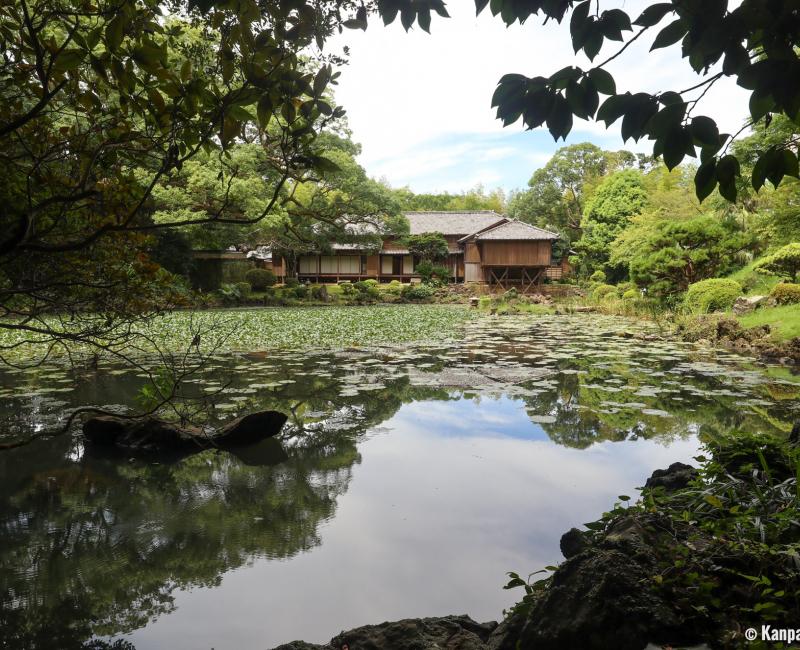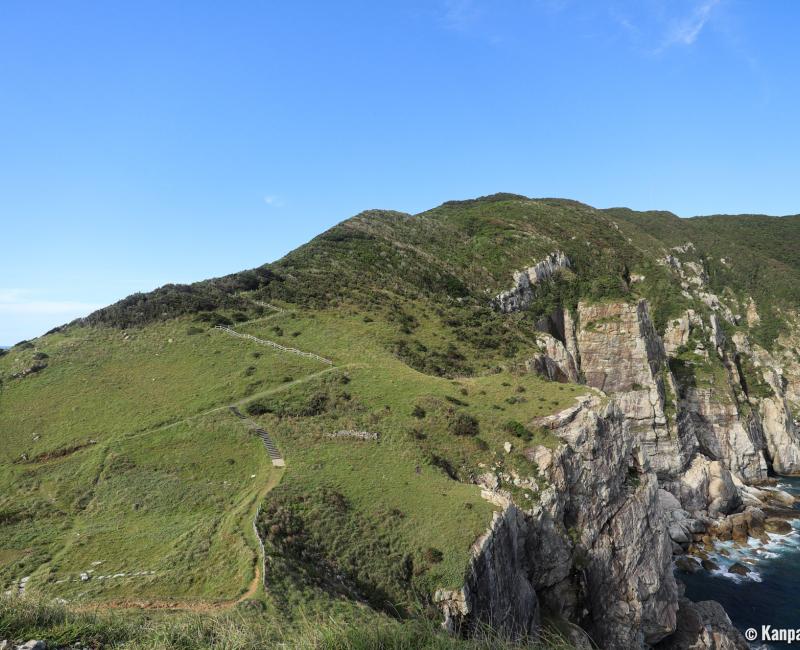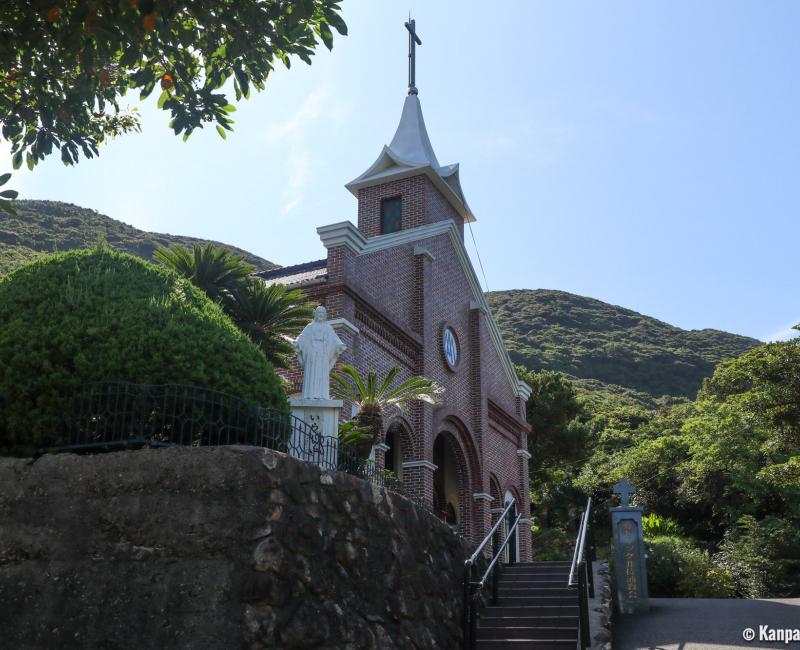Fukue-jima
The Largest of the Goto Islands
Fukue-jima is the main island of Goto archipelago, off the coast of Nagasaki prefecture, at the westernmost side of Kyushu Island. Connected to the rest of Japan by its harbor and airport, Fukue is the most urbanized place to start the discovery of Goto Islands, a confidential touristic destination, with a specific religious past and invigorating marine landscapes.
Let’s have a look at Goto Islands’ geography:
- Goto-retto 五島列島 is the Japanese name of the Goto archipelago, that encompasses more than a hundred islands, but specifically five main islands:
- Fukue-jima (the most inhabited),
- Hisaka-jima,
- Naru-shima,
- Wakamatsu-jima, and,
- Nakadori-jima (the second in importance).
- Goto-shi 五島市 is Goto City, extending on three of the five main islands, including Fukue, Hisaka and Naru.
Fukue-jima is the main access to Goto and is served by an airport and a harbor with several daily connections to Nagasaki.

The feudal heart of the city
Goto City’s downtown brings back in Fukue’s past up to 1863, near the end of the Edo period (1603 – 1868), when the Goto Clan’s Ishida Castle 🏯 was completed to protect the inhabitants. At least fifty thousand workers were employed during about fifteen years to build the fortified monument, that is one of the last castles built in Japan. Nowadays, only its gate and fortified walls remain and shelter Goto Municipal High School. Right next to it, the Former Lord Goto Residence, built by the thirtieth head of the clan for his older days, is opened to the visit.
Beside its quite traditional house, with tatami flooring and fusuma sliding doors, the place is renowned for its Japanese garden shaped into the Chinese character for "heart" (心) designed by a monk of Kyoto. The particular outline of the garden is not easily viewable, but it is nonetheless a beautiful place. Moreover, a "paper chase" is organized to find the turtles in the landscape, with about thirty statues or living shells to find in total!
The Bukeyashiki street (samurai district), a classic in a former castle-town, is located close to the lord’s residence. Beautiful and authentic residences are aligned along paved street, and some of them welcome tourists, such as the Matsuzono residence, preserved in its original condition since the end of the 19th century. Take a break at the Furu-sato-kan where you can also paint the island’s traditional kites, named baramon, or make your own Japanese chopsticks in a workshop.

A generous nature
About fifteen minutes from the airport, the symbol of Fukue, the Mount Onidake, literally the "Mount Demon" is awaiting hikers. This old 315-meter-high volcano 🌋 covered in grass has ceased to worry the inhabitants for a long time. On the contrary, they frequently come take a walk on its sides and enjoy a panorama on the city from its top. Yearly kite events are held here as well.
Continuing along the coast down to its southwestern most end, Osezaki Cape is one of the most spectacular landscapes of the island. The rocky cliffs springing from the East China Sea are a breathtaking view.

A string of catholic churches
Goto Islands and more broadly Nagasaki area have the historical particularity of having sheltered the Japanese Christians, who were persecuted by the Edo period’s feudal system. At the advent of Meiji restoration (1868 – 1912), the prohibition of Christianity was lifted, and several churches were built on this welcoming land at the remotest outskirts of Japan.
Fukue-jima’s most interesting churches are Imochiura (in the south, close to Osezaki Lighthouse), Mizunoura and Dozaki (in the north).
Goto Islands will delight amateurs of a timeless Japan, tucked in its islander nature. Beside the visits of its historical heritage, Fukue-jima also boasts a jagged seaside that is ideal for invigorating walks. While not very urbanized and despite its remote location, the island offers accommodation and catering solutions that are as qualitative as in the largest cities, and a few establishments even provide upscale services.

